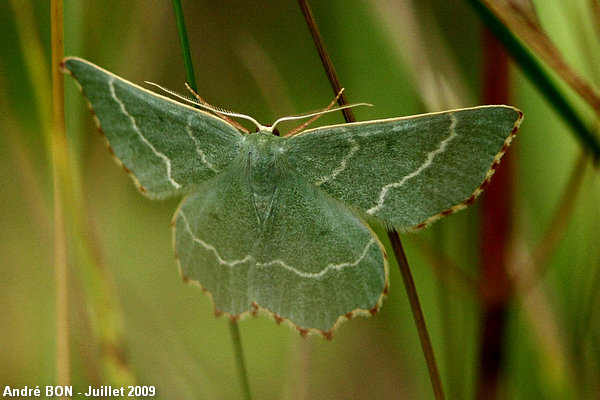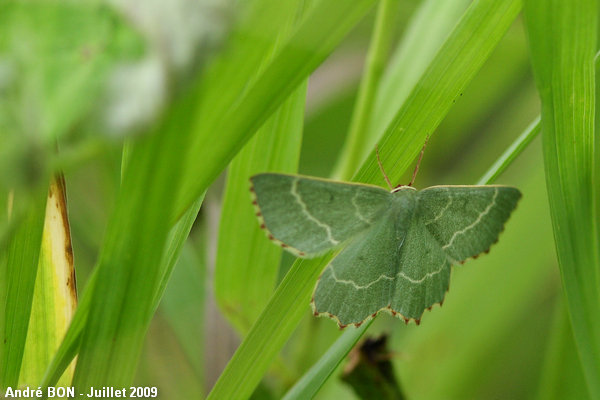

| Sussex Emerald (Thalera fimbrialis (Scopoli, 1763)) |


|
|
Scientific name: Thalera fimbrialis (Scopoli, 1763) Common name: Sussex Emerald French name: Phalène du buplèvre, Phalène du thym Order: Lepidoptera Suborder: Heterocera Family: Geometridae Subfamily: Geometrinae Wingspan: 25-38mm. Biotope: Woodland edges, clearings, waste lands. Geographic area: Europe, Asia, east to the Amur river. Flight time: June-August. Number of generations : 1 Caterpillar: Yellowish green colour with a red dorsal line which may occur as a row of dots. There are two small red-tipped spikes over the head. Host plant: Asteraceae of the Achillea genus like Common Yarrow (Achillea millefolium) , and also Bupleuvrum, Rubus, Solidago, Thymus and Vaccinium. |
The Sussex Emerald is a nice pale green colour. This beautiful colour may turn to yellow with age. The fore wings are crossed by two wavy white lines. The hind wings only show one similar cross line. The fringes of the wings are whitish and chequered with red. The hind wings are notched on the outer margin. The Sussex Emerald is attracted to light. It over winters as a larva. Among similar species, let mention the Common Emerald (Hemithea aestivaria) which distinguishes by the pointed outer margin of the hind wings. |
| [To know more about the Sussex Emerald] [Next picture] [Top] |

|
I have disturbed this Sussex Emerald when I walked among the high grasses. I apologize for having disturbed it several times till it lands in a suitable place for a picture. |
| [To know more about the Sussex Emerald] [Previous picture] [Top] |

|
The Sussex Emerald is a nice moth. I hope to see another one again very soon for another photo session. |